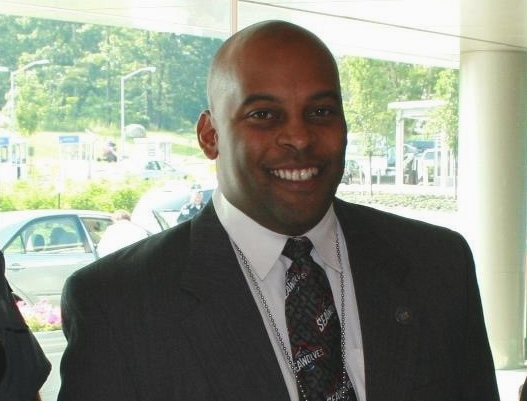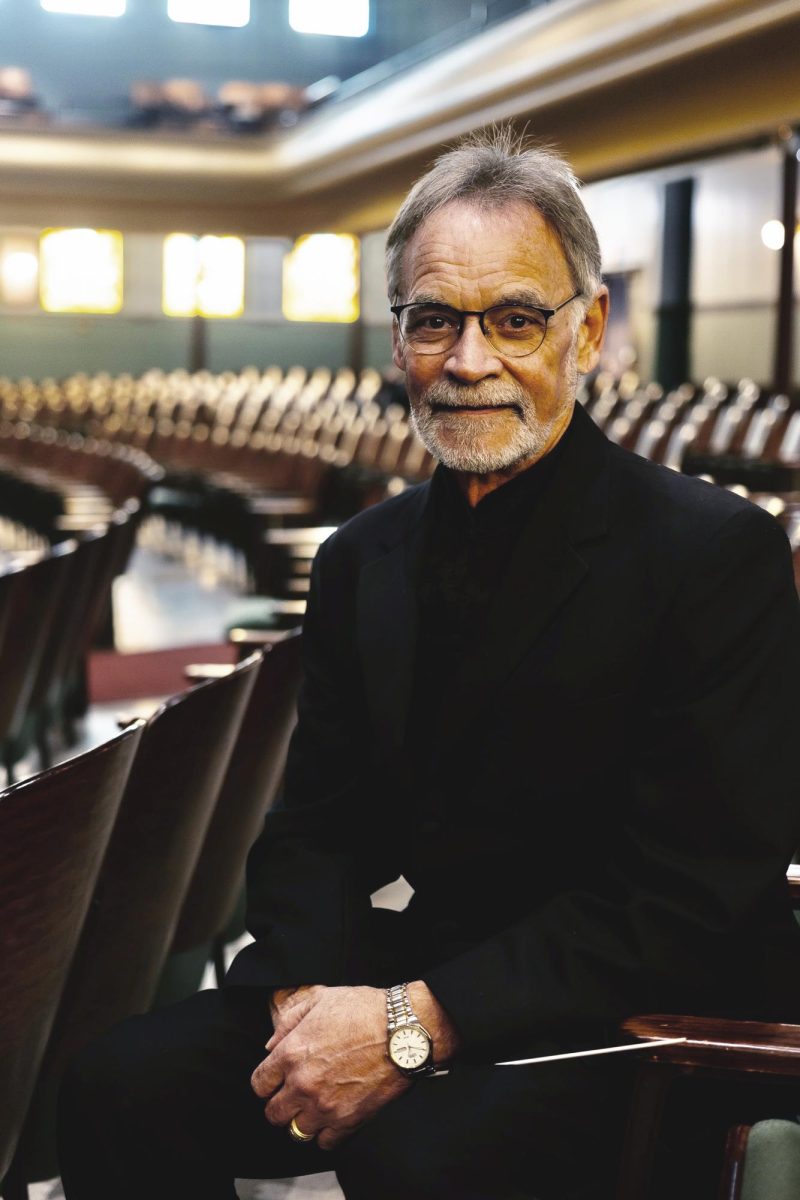Every Wednesday at noon, a man enters the thick wooden doors of Medbury Hall’s Oreon E. Scott Chapel. Shoeless, he proceeds toward the back of the small, circular chapel and soon emerges from a veiled closet with two crystal singing bowls. He pauses before ascending the three steps to the round marble altar, which is illuminated by a single beam of skylight from the above dome window — the chapel’s only light source.
Without a word, he begins to lightly stroke the edge of the smaller bowl for his audience of three, creating an all-encompassing reverberation. Each woman’s eyes are closed — perhaps they are meditating or praying — and as he begins to play the larger bowl, the two bowls resonate in harmony, seemingly in a hypnotic fashion. After a while, he places the mallets down on the altar and recedes back to his wooden chair and into meditation. Gradually, the reverberation fades until it so quiet that the ticking of a nearby clock can be heard succinctly.
For years, Ted Lyddon-Hatten, a United Methodist minister, has been welcoming the community to Scott Chapel for his half-hour session of meditation, reflection, and silence. It is one of few ways that the chapel is in use today.
“It’s my sacred time every week,” said Shari Miller, who has been coming for two years. “It gets me in a different place. It’s a way I can really try to settle my mind for 30 minutes, and I’ve learned to become more still.”
Though the primary use of the chapel today is non-denominational meditation, decades ago, it was used for much more.
The chapel was built in 1954 by Eero Saarinen and was dedicated on Nov. 8, 1955. The major donor was Oreon E. Scott, who was a life member of the Drake Board of Trustees and a leading laymen of the First Christian Church.
Its original intended purpose was to be the chapel for Drake’s Divinity School, since Drake was founded by Protestants, according to art history professor Maura Lyons.
“The fact that there really isn’t a place to preside — the chairs are spaced so that everyone is equal — it adds to the dimension of dialogue, even chanting,” said Charlene Skidmore, assistant director of the honors program. “You want the sound to be resonating and spiritual in some ways. It’s a great place to have discussion.”
The way that the chapel was designed so that everyone was evenly spaced and so that the center of the room was an illuminated circular altar was no mistake. In fact, Saarinen added multiple aspects of symbolism.
According to a Drake-issued pamphlet about the Scott Chapel, courtesy of Skidmore, the roundness of the structure is significant because “the circle is traditional in religious expression” and “connotes equality, the close-binding fellowship of humanity, and eternity.” The evenly spaced chairs signify that “all sit in equality before God.” And over the skylight dome is a bronze crown “denoting the dominion of God,” and in the center of the crown a sphere represents the world. Above the world used to be a cross, was reflected on the marble altar.
However, according to Skidmore, after the cross broke in a windstorm, it was not put back up because by that time, Drake was no longer a Christian-based school.
Though it is no longer necessarily a Christian chapel, it may be used for prayer, as well as meditation or any other group’s ritualistic practices as long as it is respectful of the space.
“Because it is lesser known on campus, I try to bring students,” said Lyons. “I’m always interested in their reactions — the white marble in the middle and the light shining down.
“Sometimes people find it a little intimidating. People are always curious about what it was used for — they aren’t used to the drama of it. People can have the same experience, but have different conclusions about it.”
According to Lyons, the former Dean of the Divinity School, John McCaw, is still living today, and his vision for the chapel is one of a hopeful future.
“He hoped that each generation of students would find a purpose for the chapel,” said Lyons. “He didn’t want it to become something that was unused space.”






